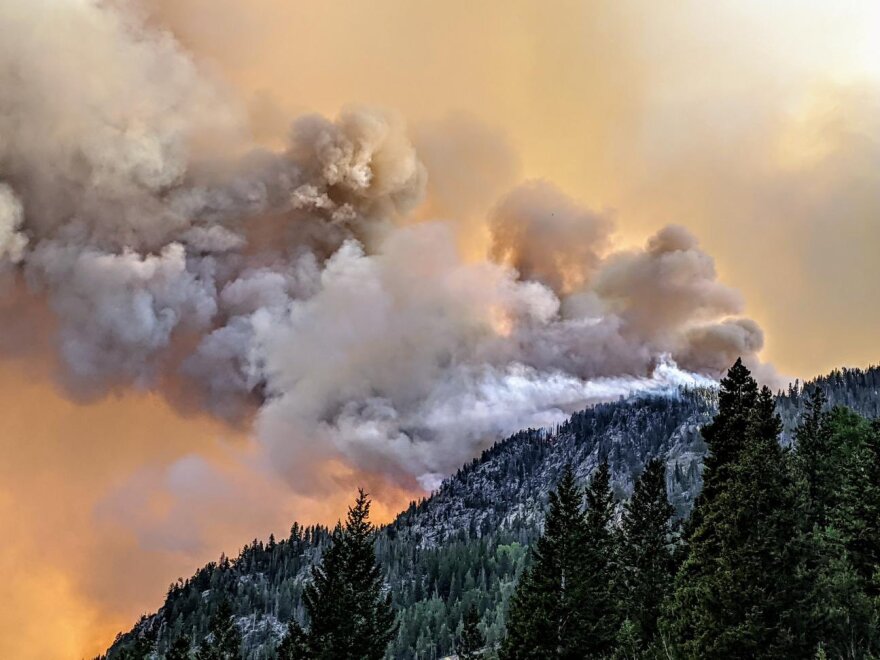Colorado fire officials along with Gov. Jared Polis announced the 2021 wildfire season mitigation plan Thursday to fight fires earlier with more funds and resources on the ground, following the an unprecedented 2020 wildfire season with three of the largest fires in state history.
“In 2021, we have already experienced fires. One of the things that is a change of paradigm is Colorado used to talk about a fire season. It’s now a year-round phenomena," Polis said.
The plan comes following Colorado's 2020 summer and fall which included three of the largest fires in state history and an unusual, extended wildfire season well into October. The 2020 fires burned more than 935 square miles (2,422 square kilometers), said Mike Morgan, director of the Colorado Division of Fire Prevention and Control.
The new approach to combatting and mitigating wildfires across the state will be an “aggressive initial attack,” Morgan said. By allocating resources to local governments sooner, they hope to lessen a fire’s impact by shortening the length of time its burning.
“We spend a little bit more money today, but we don’t have as many long duration events as a result of that,” he said.
After a devastating 2020 season, Colorado is undergoing a “metamorphosis of the change of the culture of how we respond to wildlife fire," said Stan Hilkey, executive director of the Colorado Department of Public Safety.
With excess funds, heightened aviation support, tactical prepositioning and mutual aid across local, state and federal partners, Hilkey praised the state's mitigation efforts.
“I’ve never seen a more state of readiness than we have today,” Hilkey said.
Several bills passed in the Colorado Legislature set aside millions of dollars for wildfire mitigation including funds for more aviation tools and the extension of several contracts for air tankers and helicopters used to fight fires from above.
Throughout the Southwest, extreme drought and lack of precipitation are contributing to higher and more severe wildfire risks.
In an April 1 report, the National Interagency Fire Center Predictive Services said “above normal risk is predicted to expand from southwest Colorado in May to much of southern Colorado in June. A shift northward of the above normal significant fire potential is projected across west-central and northwest Colorado into southwest Wyoming during July."
“The true nature of this fire season won’t be apparent until we see the April and May precipitation,” Polis said.
Polis said the state's growing population will lead to an increasing number of people affected by wildfires over time because of more people moving into the wildland interface and more people using outdoor areas for recreation.
The state demographer estimates that Colorado's current population of 5.7 million people will increase to 8.5 million in the next 19 years, Polis said.
Officials encouraged the public to take their role seriously in preventing wildfires as the season ramps up.
“On average across the country, human-caused wildfires make up 87% of wildfire occurrences every year. Most of these fires can be prevented,” Hilkey said.
Cigarettes, campfires, fireworks and even sparks from a trailer chain can ignite a small fire that spreads fast, damaging lands and homes, Polis said.
“A seemingly minor act, can cause great devastation in our state,” he said.
Copyright 2021 Associated Press. All rights reserved.





